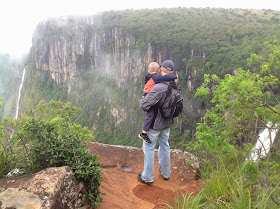For the last two months a special little fruit known Zimbabwe over has appeared on every roadside and fruit stand. These little brownish treats, pictured above, are called mazhanje (mah-shawn-jay). Mazhanje is one of the most popular wild fruits in southern Africa. You could not avoid it in Zim from November to January if you tried. The fruit tree is strong, doing well with attack from pests and growing well in poor agricultural soils that are sandy or gravelly. Like mango trees, the mazhanje tree is typically left when other trees are cut down to clear land. Hence these wild fruit trees cover many rural landscapes, despite rarely being cultivated by formal farming methods.
You may remember a blog I wrote at this time last year about something referred to here as "White Man's Mazhanje," which actually turned out to be an originally imported botanical gem called sapote. Above, three brownish golf-ball sized African mazhanje sit next to a typical apple-sized sapote for comparison. The two fruits are often compared to each other, though both have unique qualities unlike the other.


Both fruits have an obnoxiously waxy peel that can add the texture of thin, cracked wax if they are not cleaned properly. But that is where the similarities stop.
Inside, mazhanje has a unique texture that is half custard-like and half citrus-like.
The interior typically holds 3-5 seeds. Pictured above is one seed- crazy shape!
One only eats the flesh of the fruit, not the seeds. The taste has been likened to pear or plum, though neither quite describes this crazy fruit!

































































